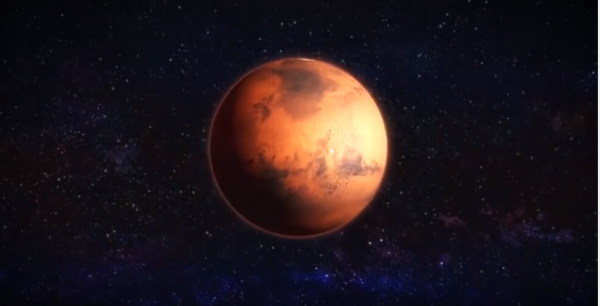By Jacques Strauss, | June 14, 2017

A Russian scientists patented potential methods to make an atmosphere on Mars. (YouTube)
The most recent Mars mission on NASA has yielded new discovery for experts. The Curiosity rover made an outstanding development as it explored a portion of ancient lake of the "Red Planet."
A NASA study, which was published Earth and Planetary Science Letters, revealed analyzed mineral sample found in the lowermost layers of Mount Sharp on Mars. The said new findings suggested that Mars' environment is far different from what it right now.
Like Us on Facebook
"We went to Gale Crater to investigate these lower layers of Mount Sharp that have these minerals that precipitated from water and suggest different environments. These layers were deposited about 3.5 billion years ago, coinciding with time on Earth when life was beginning to take hold. We think early Mars may have been similar to early Earth, and so these environments might have been habitable," Jet Propulsion Laboratory quoted NASA exploration mission scientist at Johnson Elizabeth Rampe as saying.
The minerals discovered in the said spot suggested several different liquid water environment were once existing in a now desolated planet. Ancient Mars might have been able to sustain a life similar to that of Earth.
"We have all this evidence that Mars was once really wet but now is dry and cold. Much of the water is locked up in the poles and in the ground at high latitudes as ice. We think that the rocks Curiosity has studied reveal ancient environmental changes that occurred as Mars started to lose its atmosphere and water was lost to space," Dr. Rampe added.
With the new evidence gathered, two hypotheses were presented to explain this mineralogical diversity. The first theory is that the lake waters themselves were oxidizing at its base. On the other hand, another hypothesis puts forward the idea that in the later stage fluid arose. Following the deposited rock sediments the "oxidizing groundwater moved into the area, leading to precipitation of the jarosite and hematite."
Watch here below the Curiosity Rover in action:
-
Use of Coronavirus Pandemic Drones Raises Privacy Concerns: Drones Spread Fear, Local Officials Say

-
Coronavirus Hampers The Delivery Of Lockheed Martin F-35 Stealth Fighters For 2020

-
Instagram Speeds Up Plans to Add Account Memorialization Feature Due to COVID-19 Deaths

-
NASA: Perseverance Plans to Bring 'Mars Rock' to Earth in 2031

-
600 Dead And 3,000 In The Hospital as Iranians Believed Drinking High-Concentrations of Alcohol Can Cure The Coronavirus

-
600 Dead And 3,000 In The Hospital as Iranians Believed Drinking High-Concentrations of Alcohol Can Cure The Coronavirus

-
COVID-19: Doctors, Nurses Use Virtual Reality to Learn New Skills in Treating Coronavirus Patients











